New book by the Nature Conservation Foundation: Our Encounter With a Snow Leopard
Posted by Pallavi Kamath on May 21, 2021Post written in collaboration with the team at the Nature Conservation Foundation
On 21 May, Endangered Species Day, StoryWeaver, in association with the Nature Conservation Foundation, is proud to present a new book for children on the most elusive cat in the world: the snow leopard.
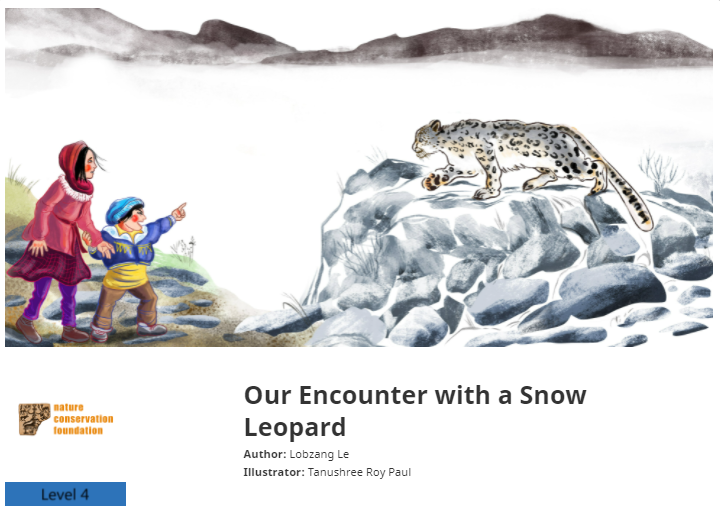
Our Encounter With a Snow Leopard is based on a real-life story written by writer Lobzang Le, who grew up in a remote village in Ladakh. One day when she takes her family’s livestock for grazing, she and her little brother come face to face with the elusive mountain cat - the snow leopard.
In this blogpost, we speak to Lobzang, the author, and Tanushree Roy Paul, the artist who brought the story to life.
Conversation with Sherab Lobzang, the author
Sherab Lobzang grew up in Kumdok village in eastern Ladakh. It is a remote hamlet in Rong valley, approximately 110 km away from Leh. She did her Masters in Political Science from Jammu University. Since her childhood, she was attracted to wildlife owing to her agro-pastoral family. She joined the Nature Conservation Foundation in November 2016. She looks after education related activities in the landscape and fieldwork. Lobzang enjoys her work as she believes wildlife conservation is essential for the communities.
Tell us about why you chose to write about the mountains and the snow leopard? What has been your inspiration behind the same?
I like the trans-Himalayan landscape and I love to explore these regions during my fieldwork. This is the reason I choose to write about it. My childhood experience connects a lot with my present work in conservation, which inspired me to write this story.
My friends in my team helped me and motivated me to write this story. Special thanks to Munib, Ajay and Dorjay because they motivated me to write this. The idea of having this story in StoryWeaver was suggested by my colleague Shweta and Jignasa who work with the communications team of NCF
What is the message that you hope to share through these stories?
I just want children to be aware and be amazed by a landscape that lies on the fringe of India. Not many people know about the way of life of the people of Ladakh.
Conversation with the illustrator, Tanushree Roy Paul
Tanushree Roy Paul is a Masters of Design graduate in Animation and Visual Studies from IDC, IIT Bombay. As a young artist, she created Illustrations for poetry of social protests and revolution and worked on sequential stories. She continued her visual arts journey by serving as an illustrator, graphic storyteller, photographer and animator to clients like Eklavya Publications, Resha by Medhavini, Farzidarzi, Ekamkaaya, Leafbird Foundation, TBS planet and Pratilipi, to name a few. She had served as an avid academician for the past 4 years guiding the young creatives in the field of Animation and Design and is currently administering her multifaceted art and design studio: The Kairos Pictures.
What did you like most about doing artwork for this book?
I believe I am one of those foot soldiers whose work had been mostly on and about documenting through visual tools, the biodiversity, ecosystems, the life around us in general. Being an academician, it has always been on my radar to educate the young thinkers and creators on environmental issues. Hence, it was obvious for me to work on this book.
What is special about drawing snow leopards?
What wowed me about this project was an opportunity to highlight an endangered majestic being and the book being a part of its conservation drive. Personally, I got a chance to know about the hardships of life at an altitude where these Phantoms of the Himalayas survive and thrive. In simple terms, the research process while developing the book had been thrilling.
How connected are you with nature? Were you able to draw inspiration from your connection with nature into the book?
According to my observation, I have witnessed artists or creative folks in general have a propensity to love, admire, adapt and work towards the conservation of the environment, our nature. I have had an intense inclination towards our environment since my childhood, and believe that being an artist is a by-product of that inclination.
I certainly got an opportunity to out-pour what I stored for a few years now since my several visits to different regions of Himalaya, this is the first story that I am illustrating related to the Himalayan ecosystem.
Read Our Encounter With a Snow Leopard - written by Lobzang Le, illustrated by Tanushree Roy Paul, and published by the Nature Conservation Foundation - for free on StoryWeaver.
Be the first to comment.#FreedomtoRead 2019 Unnati ISEC on their challenging journey of translating stories into Korku
Posted by Amna Singh on February 15, 2019Unnati Institute for Social and Educational Change has been working in the district of Akola Akot and Telhara in the Vidarbha region of Maharashtra with children from the Korku tribal community since the last five years. They work towards the improvement of literacy skills of these children. Since the Korku language does not have a script, the organisation is developing resources using the Devanagari script to ensure that the children learn to read and write Korku. These resources include storybooks, songs, curriculum-related resources and reading material. It runs a programme on ‘Enhancing Language Skills of Children from Tribal Communities’ through education support classes with the objective of facilitating improvement in tribal children’s basic reading and writing with comprehension skills in Korku, their mother tongue and Marathi, which is a medium of instruction in schools. Tribal youth have taken the lead in translating Hindi and Marathi storybooks into Korku as part of this programme and children are excited and happy as they are getting to read stories in their own mother tongue. Sharad Prakash Suryawanshi, Program Manager Unnati ISEC shares the journey of building a Korku digital library.
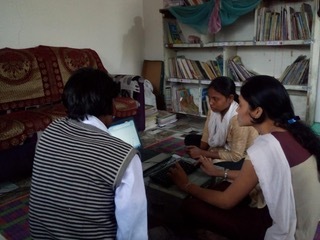
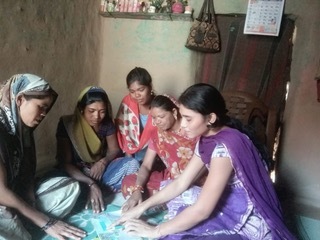
उन्नती संस्था गेल्या पाच वर्षापसून अकोला जिल्ह्यातील अकोट आणि तेल्हारा या तालुक्यातील कोरकू आदिवासी मुलांना वाचन लेखन यावं, याकरिता काम करीत आहे. कोरकू मुलांना वाचन लेखन यावे, याकरिता संस्था कोरकू भाषेत उपलब्ध नसलेले साहित्य देवनागरी लिपी वापरून विकसित करण्याचे काम करीत आहे, कारण कोरकू भाषेला लिपी नाहीये. त्यात गोष्टींचे पुस्तके, गाणे, वाचनपाठ, शैक्षणिक साहित्य असे निर्मिती करीत आहे.
त्याचच एक भाग म्हणून विविध प्रकाशनाचे गोष्टींचे पुस्तके भाषांतर, रुपांतर करून मुलांना वाचनास उपलब्ध करून देत आहोत. त्यांना त्यांच्या भाषेत पुस्तके मिळाल्याने ते सुद्धा आनंदाने वाचन करतात. हे पाहून खूप समाधान वाटत आहे. हे भाषांतर करण्याचे काम कोरकू आदिवासी युवक-युवती हेच करतात. त्याची प्रक्रिया ही पुढील प्रमाणे सांगता येईल.
टप्पा पहिला - पुस्तकांची निवड : उपलब्ध पुस्तकांपैकी पुस्तकात ग्रामीण भागाचे चित्र, मजकूर, आशय पाहतो. तसेच स्त्री-पुरुष समानता दर्शवणारे, मुलांच्या भावविश्वाला स्पर्श करणारी. अशा पुत्कांची निवड पूर्ण कार्यकर्ते करतात.
टप्पा दुसरा - भाषांतर : निवडलेले पुस्तकाची प्रिंट काढली जाते, मग तीन कार्यकर्ते एकत्र बसतात, चर्चा करतात, आणि गोष्टीचे भाषांतर सुरु होते. त्यांना काही शब्द समजत नाही, त्याचा अर्थ समजत नाही, त्यासाठी मग समन्वयकासोबत, शब्दकोश मध्ये पाहून चर्चा केली जाते. त्यानंतर जी गोष्ट भाषांतर केली, त्याची प्रिंट काढली जाते. आणि परत अजून भाषांतर बरोबर झाले का हे पहिले जाते, त्यावर चर्चा करून बदल केले जातात.
टप्पा तिसरा - रुपांतर : जे पुस्तक भाषांतर केले, ते कार्यकर्ते घरी घेऊन जातात, आणि घरातील वरिष्ठांना, समुदायात लोकांना वाचून दाखवतात, त्यावर त्यांचे मत विचारात घेऊन, नोंद केली जाते. तसेच गावात ज्यांना लिहिता वाचता येतं, त्यांना मराठी आणि कोरकू भाषेतील पुस्तकांच्या प्रिंट वाचण्यास दिल्या जातात, त्यावरून त्यांच्या काही सूचना आल्या तर, त्या नोंदवून घेतल्या जातात. ही प्रक्रिया झाल्यावर, कार्यलयात दुसऱ्या दिवशी तिन्ही कार्यकर्ते परत बसतात, दोन्ही नोंदी पाहून चर्चा करतात, आणि तसे बदल करतो.
टप्पा चौथा – पुस्तकात सर्व चर्चा करून संकलन केले जाते. त्याच्या मराठी, हिंदी आणि कोरकू भाषेतील पुस्तकाच्या रंगीत प्रिंट काढून किंवा दुकानातून पुस्तक विकत घेऊन, काही पुस्तके मिळत नाहीत, मिळाले तरी पाहिजे तेवढ्या प्रतींमध्ये मिळत नाही. हे पुस्तके मग शिकू आनंदे वर्गातील मुलांना, गावातील मुलांना उन्नती पुस्तक पेटी प्रकल्पांतर्गत वाचनासाठी, गोष्ट सांगण्यासाठी उपलब्ध करून दिले जाते.
काम करीत असतांनाच्या येणाऱ्या अडचणी:
पुस्तक निवड करण्यात अडचण येते, कारण कोरकू भागातील घटक पुस्तकात असत नाहीत.
काही शब्दांचे अर्थ लवकर समजत नाही, सापडत नाही.
गावात लोकांना विचारून नोंद घेतांना बऱ्याच वेळेस दिवसा लोक उपलब्ध होतात, असे नाही. त्यामुळे रात्री उशिरा पर्यंत किंवा सकाळी एकदम लवकर त्यांच्या वेळा पाहून काम करावे लागते.
गावात शिकलेले लोक त्यात महिला यांचे प्रमाण फार थोड्या प्रमाणात आहे, त्यामुळे रुपांतर करायला मर्यादा येतात.
तसेच कार्यकर्ते नियमित राहत नाही.
त्यांना भाषांतर, रुपांतर याचे प्रशिक्षण देऊन लगेचच समजत नाही, म्हणून काही दिवस त्यांची समज बनण्यात जातात.
कोरकू भाषा ही दर १० किलो. अंतरावर थोडी बदलते, त्यामुळे एकूण क्षेत्राचा विचार करून रुपांतर करावे लागते.
कार्यालय हे गावात असल्याने बऱ्याच वेळेस लाईटची अडचण येते.
संगणक कमी असल्याने त्या ठिकाणी मर्यादा येतात.
कार्यकर्त्यांना तांत्रिक माहिती जास्त नसल्याने अडचणी येतात.
स्तर एकचे एक पुस्तक रुपांतर करायला किमान एक पूर्ण दिवस लागतो. स्तर नुसार कालावधी वाढू शकतो. आणि मनुष्यबळ, तीन कार्यालयातील कार्यकर्ते, आणि गावातील किमान पाच लोक.
भाषांतर, रुपांतर करणारे युवक युवती :
१. राजकन्या शांतीलाल गवते, गाव: धोंडा आखर, तहसील: तेल्हारा, जि. अकोला, राज्य: महाराष्ट्र
२. माया श्रीराम मावस्कर, गाव: भिली, तहसील: तेल्हारा, जि. अकोला, राज्य: महाराष्ट्र
३. ब्रिजलाल मोतीराम मावस्कर , गाव: भिली, तहसील: तेल्हारा, जि. अकोला, राज्य: महाराष्ट्र
४. सुभाष चांदुजी केदार, गाव: चंदनपुर, तहसील: तेल्हारा, जि. अकोला, राज्य: महाराष्ट्र
Here's a little glimpse of the stories Unnati ISEC has translated into Korku on StoryWeaver. Do take a look at all their stories here.
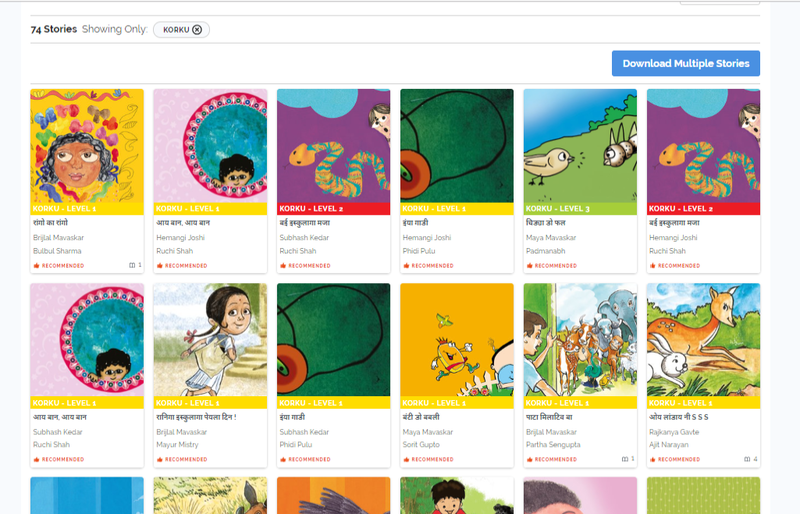
The creator of Gardhab Das, Target Magazine's iconic cartoon character, on creating Gadbad Das for Pratham Books!
Posted by Amrita Bose on April 09, 2019If you grew up during the 80s and the 90s, you could not not have pored over copies of popular children’s (in today’s time it would have targeted the Young Adult category) magazine Target, published by the India Today group. A constant companion during long train journeys, sultry afternoons during summer vacations, copies of Target magazine were zealously guarded from annoying friends with borrowing-but-not-returning habits. Along with a slew of reader contributions, in-house features (anybody remembers that fantastic page dedicated to pen friends?) Target ran a bunch of popular comic strips including Detective Moochhwala by Ajit Ninan, Granny’s Gupshup by Praloy Chakravorty, It Happened in History by Renuka Narayanan. But perhaps the most memorable character remains Gardhab Das, a kurta-pajama wearing, harmonium wielding donkey, who was also an unemployed music teacher.
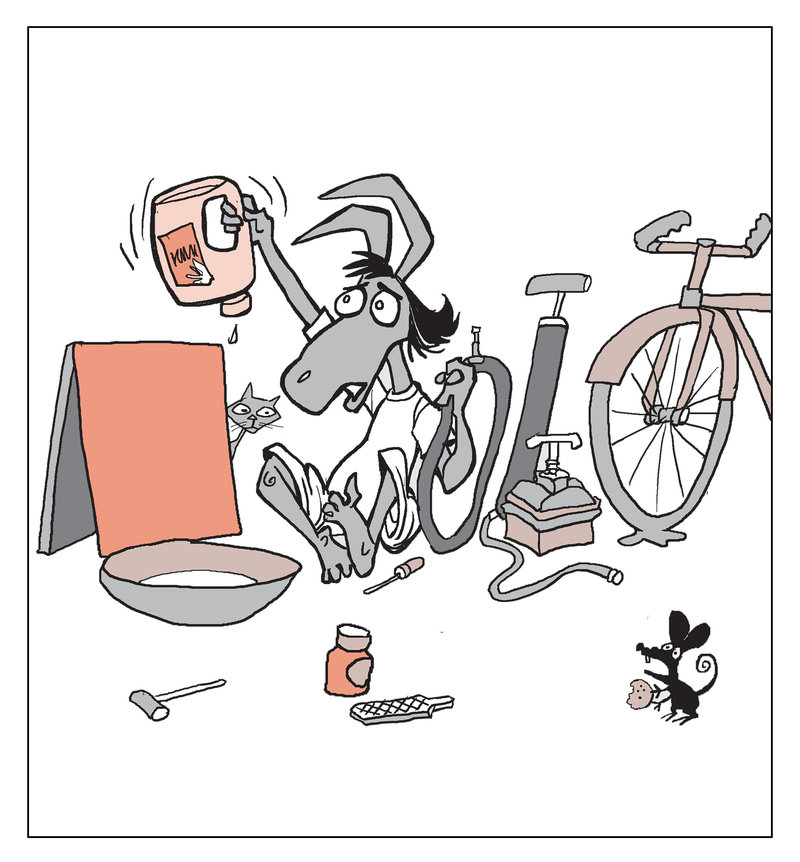
Co-created by cartoonist brothers Neelab and Jayanto Banerjee, Gardhab's favourite weapon for “mass destruction" was his singing talent or the lack of it. His singing mostly landed him in trouble, but sometimes it also got him out of sticky situations.
And bringing back the charm of Gardhab Das and the nostalgia associated with him is Jayanto with his newest creation for Pratham Books: Gadbad Das, son of Gardhabh, a millennial of sorts, but unfortunately for him, musical talent is still not in his genes. Gadbad lives in small town India. Like his pa, Gadbad is a terrible singer too. Everybody knows this, except him! Gadbad does various odd jobs to survive and solves his problems musically mostly. Like in his debut book — No Water for you, where Gadbad has to fix a puncture in his cycle shop, but he has run out of water. Off goes Gadbad to find some water, but it’s not as easy as you’d think.
Gadbad’s creator Jayanto, who has, post Target, done stints at India Today, Times of India, and Hindustan Times as a cartoonist, tells us why he decided to resurrect Gardhab Das into our lives again with his mini-me: Gadbad, reminisces about Target days and creating an iconic cartoon character.
What was the original inspiration for the Gardabh Das comic strip that ran in Target from 1980s to early 90s?
To do that I will have to go back to that era. This was the late 1980s and the editor of Target was Rosalind Wilson, a British lady. She wanted an Indian cartoon strip to be created as a double spread in the magazine and Neelabh and I met with her to discuss the possibility of creating a comic strip once in three months. Her brief to us was very clear, “It should be about your life [ we were from Lucknow], the comic strip needs to have a small town feel to it. We thought about it and decided that unlike every other comic strip that had superheroes, our hero basically would be a loser. He would be terrible at singing and unemployed and that kind of gave us that a fertile space to create really funny situations that protagonist Gardhab Das keeps getting into.
What was the appeal of Gardhab Das during his time?
Gardhab had to be an everyday character, and relatable to kids, their parents and grown ups as well. What was to be a three-monthly comic strip (featured as a double spread) soon became a monthly affair thanks to its immense popularity. In fact Gardhab became so popular that the comic strip became part of Target’s popular yearly diary, made it to annual issues and even got its own digest. There was a point in time when Gardhab was going to be killed off because its illustrator Neelab (Jayanto claims his brother was much better at creating Gardhab than him) had decided to move on, but the then editor Vijaya Ghosh insisted that Jayanto continue with the comic strip and it had another successful run for the next few years until the magazine shuttered.
What inspired you to create Garbad Das for Pratham Books? How is Gadbad similar or different from the legendary Gardabh Das?
Initially while discussing with the Pratham Books editorial team we wondered whether we should bring back the original Gardabh Das for the book. But we realised that Gardabh belonged to another era and we wanted to contemporise the character even though father and son have the same talents. Hence we decided to introduce Gadbad Das, son of Gardabh Das, a character who was born after the year 2000. Even though Gadbad might be contemporary, the look and feel of the character and the setting are more small town than metros. A hand pump, a very rare site in big cities is still prevalent in small town India. But water and water shortage is a common problem that plagues the entire country.
Jayanto hopes that Gadbad Das can become a series and become as popular as his illustrious father. Characters such as RK Laxman’s Common Man and the Amul Girl have grown on us, and are still going strong, so why not Gadbad Das, says Jayanto.
comments (7)